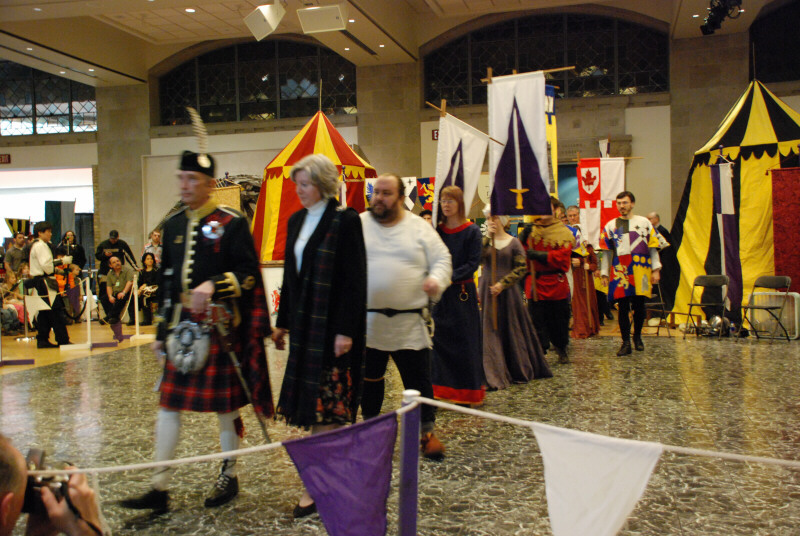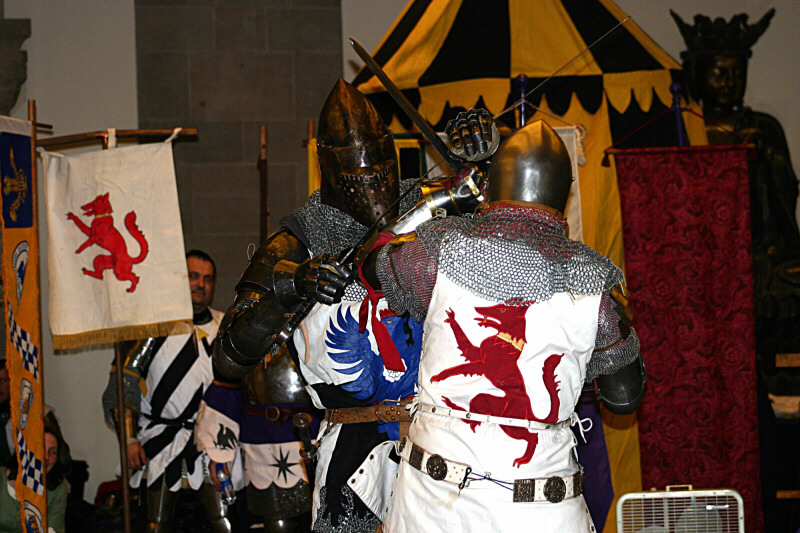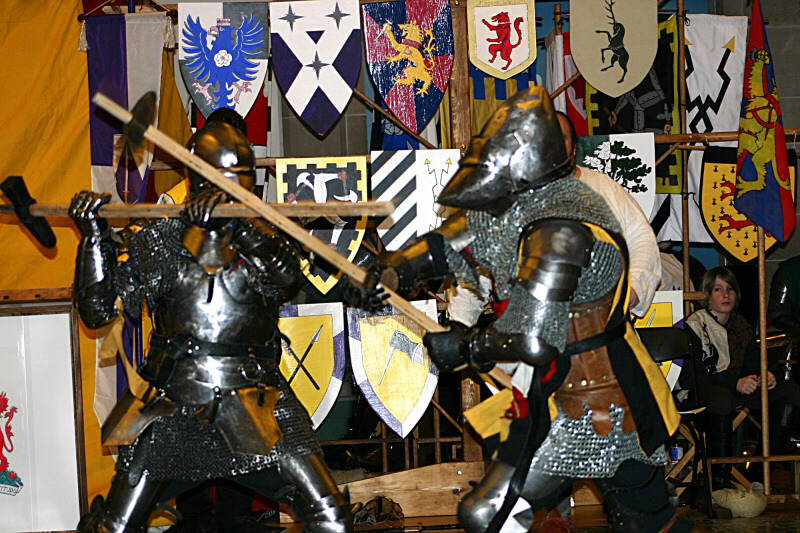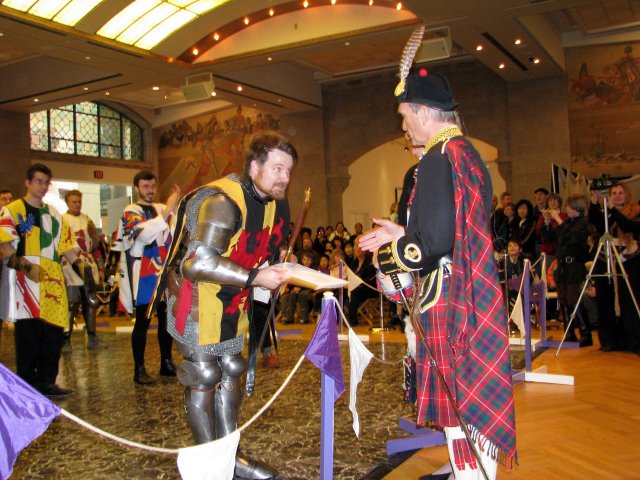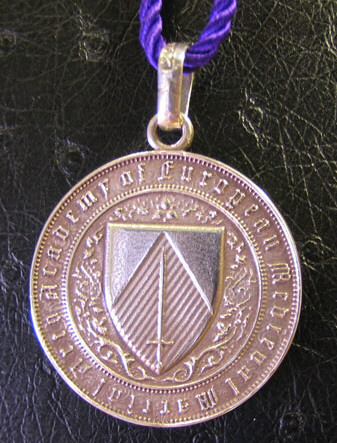
The
Academy of European Medieval Martial Arts or AEMMA, is the only school in the Greater Toronto Area which offers historical fencing and fighting art training known as "
l'arte dell'armizare". The methodology was developed as a result of over a decade of research on medieval treatises which describe fighting systems covering grappling, dagger, sword, spear, poleaxe and mounted combat.
AEMMA's focus is principally an Italian swordsmaster by the name of
Fiore dei Liberi. He was born sometime around 1350 in a village Premariacco, located near Cividale d'Austra in north-eastern Italy. Sometime in the beginning of 1400, he entered the court of Niccolo III d'Este, Marquise of Ferrara, as the master swordsman. He then began to write a manuscript for the nobility on behalf of Signore di Ferrara. In 1410 Fiore dedicated his treatise to his Marquise. The manuscript was entitled "
Flos Duellatorum" or "Flower of the Battle". Another version of the manuscript is entitled "
Fior Battaglia".
As a "newbie", the typical question asked is "
what do I need to buy or bring in terms of equipment to start?". A valid question and an easy one to respond to. Any individual (male or female) who wish to train in the art only needs to have comfortable black/dark training pants (sweats, tights), garden-variety leather gloves, appropriate footwear (flat soled training shoes are the best) and a T-shirt (AEMMA has T-shirts for $20). AEMMA has extra weapons (swords, daggers) for students to use. It should become clear that the initial outlay of cash for the purchase of equipment is very low. However, as one progresses through training, students are encouraged to purchase their own sword (arming sword) for as low as $120. One of our past students, Charles Jevons "
Swordcrafts" makes the training swords used at the Academy.

Another common question asked is "
when are the practices scheduled?".
Practices are scheduled three times weekly, with a combined recruit and senior students training Sunday mornings between 10am and noon, followed by recruit training Monday evenings between 6:30pm and 8:30pm and finally, Wednesday evenings between 8:30pm and 10:30pm.
One cannot ignore another important question regarding
fees, "
how much does the training cost?". A somewhat under-publicized special is the first free month of training. This little known gem offers a "noob" the chance to train as often as one likes for their entire first month of training. All you have to do is print out the special "
certificate" and bring it to your first class. There is no need to arrange an appointment. Simply show up, identify yourself to the instructor or instructors on hand, and present the certificate. Following a bit of paper work you're good to go. In general, fees are structured into three types:
committed: allows one to train as often as there are training classes for $100 monthly and it includes longbow archery practices on Saturdays;
casual: allows one to train once weekly for $65 per month;
occassional: a pay as you play fee of $22 per training session.
Lastly, "
where is the school located?". AEMMA is resides in Toronto, located near the intersection of
Dupont and Ossington. Click on the link to pull up a map, including a TTC map on how to get there.
"Armed" with the above details, go forth and knock on AEMMA's door and demand that free month of training (bring the certificate!!) and learn about the medieval period (you can't help it!) and train in the fighting art which will offer you not only skills in self-defense easily applicable in the 21st century, but it's a pretty good workout as well.
 Wednesday evening, July 2, between 6 - 8pm at the Smiths Cove Fire Hall. The summer session concludes with a bar-b-que at the residence of David M. Cvet in Smiths Cove on Saturday, July 30 (rain day - Sunday, July 31).
Wednesday evening, July 2, between 6 - 8pm at the Smiths Cove Fire Hall. The summer session concludes with a bar-b-que at the residence of David M. Cvet in Smiths Cove on Saturday, July 30 (rain day - Sunday, July 31).
 The
The 
